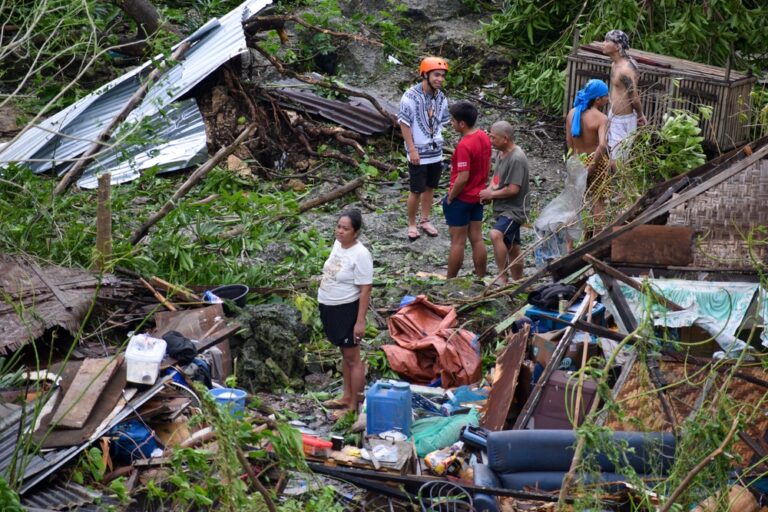A devastating super typhoon has slammed into the Philippines, unleashing destructive winds and torrential rain. Authorities have warned of “life-threatening conditions” as the storm moves across the nation’s largest and most populated island.
Bicol Region Hit First by the Typhoon
Typhoon Fung Wong, with sustained winds of 185 km/h, is striking multiple provinces, according to the national weather service Pagasa. The eastern Bicol region was the first to face its force early Sunday morning. Luzon, the country’s main population center, is expected to take the brunt by nightfall.
Locally known as Uwan, Fung Wong follows only days after Typhoon Kalmaegi devastated communities and killed nearly 200 people. Schools have closed or moved lessons online, while Philippine Airlines has cancelled numerous domestic flights ahead of the storm.
Pagasa predicts the typhoon will weaken after landfall but remain strong as it crosses Luzon. Eastern provinces have already experienced heavy rain and fierce winds since Saturday evening.
Evacuations Underway as Coasts Brace for Impact
Officials have urged residents in low-lying and coastal areas to evacuate immediately. On Catanduanes Island in the Bicol region, emergency teams reported extreme conditions early Sunday.
In Aurora province, 21-year-old hotel worker Hagunoy said police repeatedly checked to ensure all coastal hotels were cleared. By Sunday morning, resorts and beaches were deserted as residents prepared for landfall expected around midnight.
The tide surged sharply through the day. Hagunoy said he would remain to protect the property before leaving on his motorbike once it became too dangerous. Staff tied windows with ropes and reinforced gates to prevent damage from the violent winds.
Rescue Operations Halted After Kalmaegi’s Deadly Aftermath
Fung Wong has forced the suspension of rescue missions still underway after Typhoon Kalmaegi, one of the strongest storms this year. Torrential rain caused deadly landslides and flash floods that wiped out entire neighborhoods.
At least 204 people have been confirmed dead, with more than 100 still missing. In Vietnam, five people also died as powerful winds uprooted trees, tore off roofs, and shattered windows.
Nation Declares State of Calamity
The Philippine government has declared a nationwide state of calamity after Kalmaegi’s destruction and ahead of Fung Wong’s full impact. The declaration allows quicker access to emergency funds and speeds up the distribution of aid.
Many families still traumatized by Kalmaegi remain fearful. “We decided to evacuate because the last typhoon flooded our home. I just want my family safe,” said Norlito Dugan, sheltering in a church in Sorsogon, Luzon.
Another evacuee, Maxine Dugan, said: “The waves near my house are enormous. I live close to the shore. The winds are strong, and the sea keeps rising.”
Climate Change Drives Stronger Pacific Typhoons
The Philippines lies directly on the Pacific typhoon belt, making it one of the world’s most vulnerable nations to tropical cyclones. Around 20 tropical storms form in the region annually, with about half hitting the country.
Experts say climate change may not increase the number of typhoons but makes them far stronger. Warmer seas and rising air temperatures intensify storms, producing stronger winds, heavier rainfall, and more destructive coastal flooding.

